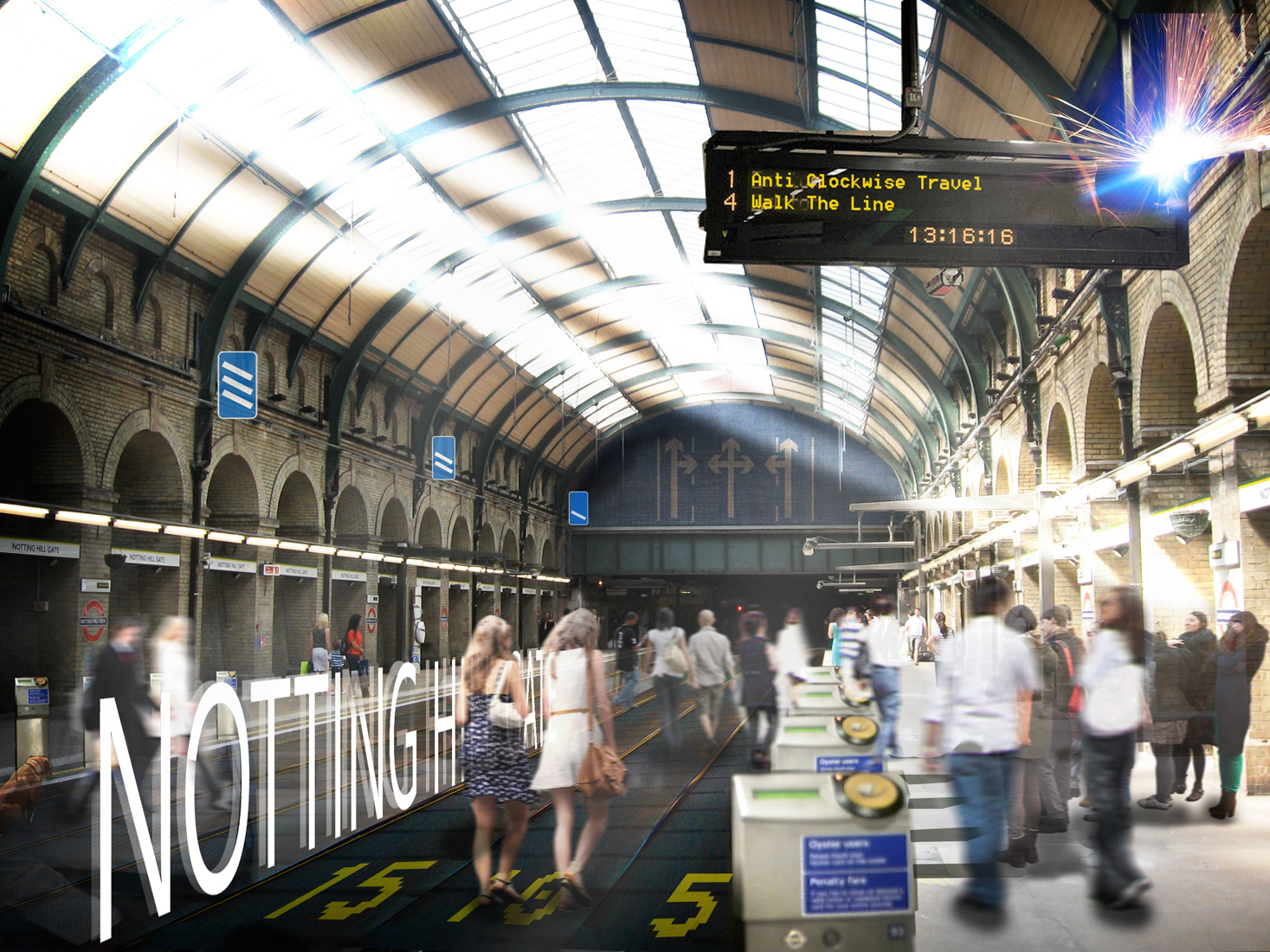London Underground’s Circle Line could be remade into a 17-mile-long moving sidewalk.
Dezeen reports that architecture firm NBBJ pitched a concept where the train service would be removed and three sets of "travelators," as they are called, would be installed. The walkways would run next to each other and operate at three speeds, from the low speed of 3 to 9 mph to the maximum speed of 15 mph.
NBBJ said that the plan would make transportation faster by eliminating the need to stop at stations.
The 36-station Circle carries 114 million passengers annually and has been in operation since 1863. The line runs in both directions around a loop around central London, with an extension that juts off the circuit.
The Daily Mail writes that the Circle Line has some issues. It can only hold up to eight trains at a time, and trains can only reach a top speed of 20 mph. In ideal conditions, trains complete the loop in an hour, but because of the system’s age and the amount of rider congestion, delays are frequent.
With the travelator, walking at a 3 mph clip at the 15 mph top speed will get a commuter around the loop in just 56 minutes. The walkways could hold up to 55,000 people at once.
Wired reports that all practical considerations, like price, construction, and energy usage, have yet to be determined.

Related Stories
| May 13, 2014
19 industry groups team to promote resilient planning and building materials
The industry associations, with more than 700,000 members generating almost $1 trillion in GDP, have issued a joint statement on resilience, pushing design and building solutions for disaster mitigation.
| May 11, 2014
Final call for entries: 2014 Giants 300 survey
BD+C's 2014 Giants 300 survey forms are due Wednesday, May 21. Survey results will be published in our July 2014 issue. The annual Giants 300 Report ranks the top AEC firms in commercial construction, by revenue.
| May 1, 2014
Super BIM: 7 award-winning BIM/VDC-driven projects
Thom Mayne's Perot Museum of Nature and Science and Anaheim's new intermodal center are among the 2014 AIA TAP BIM Award winners.
| Apr 29, 2014
USGBC launches real-time green building data dashboard
The online data visualization resource highlights green building data for each state and Washington, D.C.
Smart Buildings | Apr 28, 2014
Cities Alive: Arup report examines latest trends in urban green spaces
From vertical farming to glowing trees (yes, glowing trees), Arup engineers imagine the future of green infrastructure in cities across the world.
| Apr 9, 2014
Steel decks: 11 tips for their proper use | BD+C
Building Teams have been using steel decks with proven success for 75 years. Building Design+Construction consulted with technical experts from the Steel Deck Institute and the deck manufacturing industry for their advice on how best to use steel decking.
| Apr 2, 2014
8 tips for avoiding thermal bridges in window applications
Aligning thermal breaks and applying air barriers are among the top design and installation tricks recommended by building enclosure experts.
| Mar 26, 2014
Free transit for everyone! Then again, maybe not
An interesting experiment is taking place in Tallinn, the capital of Estonia, where, for the last year or so, its 430,000 residents have been able to ride the city’s transit lines practically for free. City officials hope to pump up ridership by 20%, cut carbon emissions, and give low-income Tallinnites greater access to job opportunities. But is it working?
| Mar 26, 2014
Callison launches sustainable design tool with 84 proven strategies
Hybrid ventilation, nighttime cooling, and fuel cell technology are among the dozens of sustainable design techniques profiled by Callison on its new website, Matrix.Callison.com.
| Mar 20, 2014
Common EIFS failures, and how to prevent them
Poor workmanship, impact damage, building movement, and incompatible or unsound substrate are among the major culprits of EIFS problems.

















